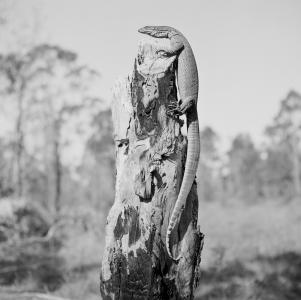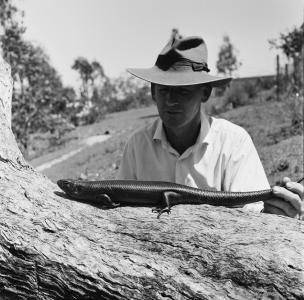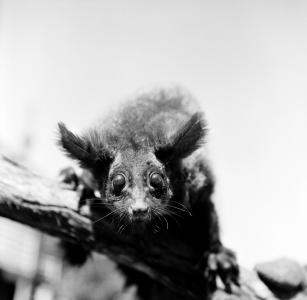Picture this: you’re walking through the thick ferns and leafy undergrowth of Tasmania’s bushland, and hear a bird call overhead. You look up to spot a sacred kingfisher perched on the branch of a gum with its latest catch - a dragonfly. In over 20 years as a wildlife photographer, Harry Frauca captured hundreds of these moments. In doing so, he contributed significantly to what we know about native Australian wildlife and the habitats they call home.
Harry Frauca was born in Girona, Spain on October 14 1928. In 1955 he migrated to Australia from Denmark with his wife Claudia Frauca. He cited his occupation at the time as a 'freelance magazine writer'. They arrived in Adelaide and shortly afterwards moved to Hobart, Tasmania. Frauca began working as a photographer for newspapers, magazines, and the Australian News and Information Bureau.
The main aim of the Australian News and Information Bureau (ANIB) was to encourage migrants to come to Australia. This was achieved by advertising key industries like forestry, fisheries, construction, farming, agriculture, engineering, mining and manufacturing to the rest of the world. Photographs taken by ANIB photographers often depicted an idealised image of Australian society.
Frauca's career at the Bureau involved taking photos of animals, plants and scenery. Frequently, photos of native wildlife and plants were in demand by the Bureau because of their significance to painting Australia's national identity as one of wild bushland and unique animals.
Frauca mostly took his photos of scenic vistas and wildlife in Tasmania and Queensland, where he moved later in life. A 1966 review from the Cambridge Conservation journal, Oryx, reported that Frauca was a photographer who appreciated 'the need to live in the bush to do his work properly and the advantages of photographing anything of interest that comes his way, rather than making special trips in pursuit of particular species.' This was in stark contrast to his colleagues at the Australian News and Information Bureau, who travelled around Australia for weeks at a time photographing an area and moving on to the next.
Frauca's photos featured in his books on natural history, in which he called for the protection of native habitats. His books were significant at a time when there were very few publications on the behaviour of native Australian animals. As an experienced environmentalist, Frauca noted native birds and their habitats were declining due to man-made causes like land clearing for farming and agriculture. In his 1971 book Australian Bush Birds, Frauca writes: 'It is essential to know the detailed life history of a species … the day when their life histories will be well known seems a long way off'. Frauca made it his mission to try to document some of these histories. In 25 publications over the course of his life, Frauca widened the scope of knowledge in the field of natural history.
Frauca passed away in 1986. Today he is commemorated in his former home in Bundaberg with the Harry Frauca walkway in Baldwin Swamp. The Harry Frauca Walking track and Harry Frauca Information Panel in the Mount Walsh National Park, Biggenden are also named after him.
















